Jean-Léon Huens
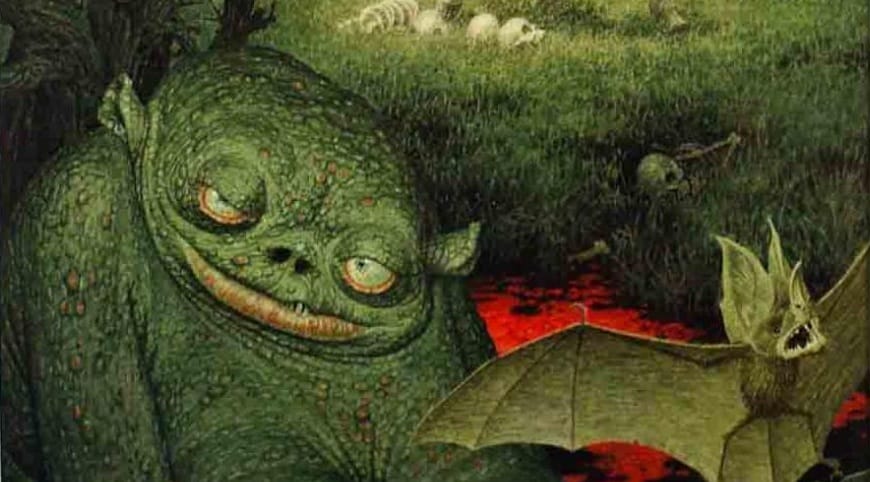
As a kid, I spent quite a while staring at my family's tattered paperback cover for Lloyd Alexander's The High King, the fifth and final book in the high fantasy kid's book series 'Chronicles of Prydain.'
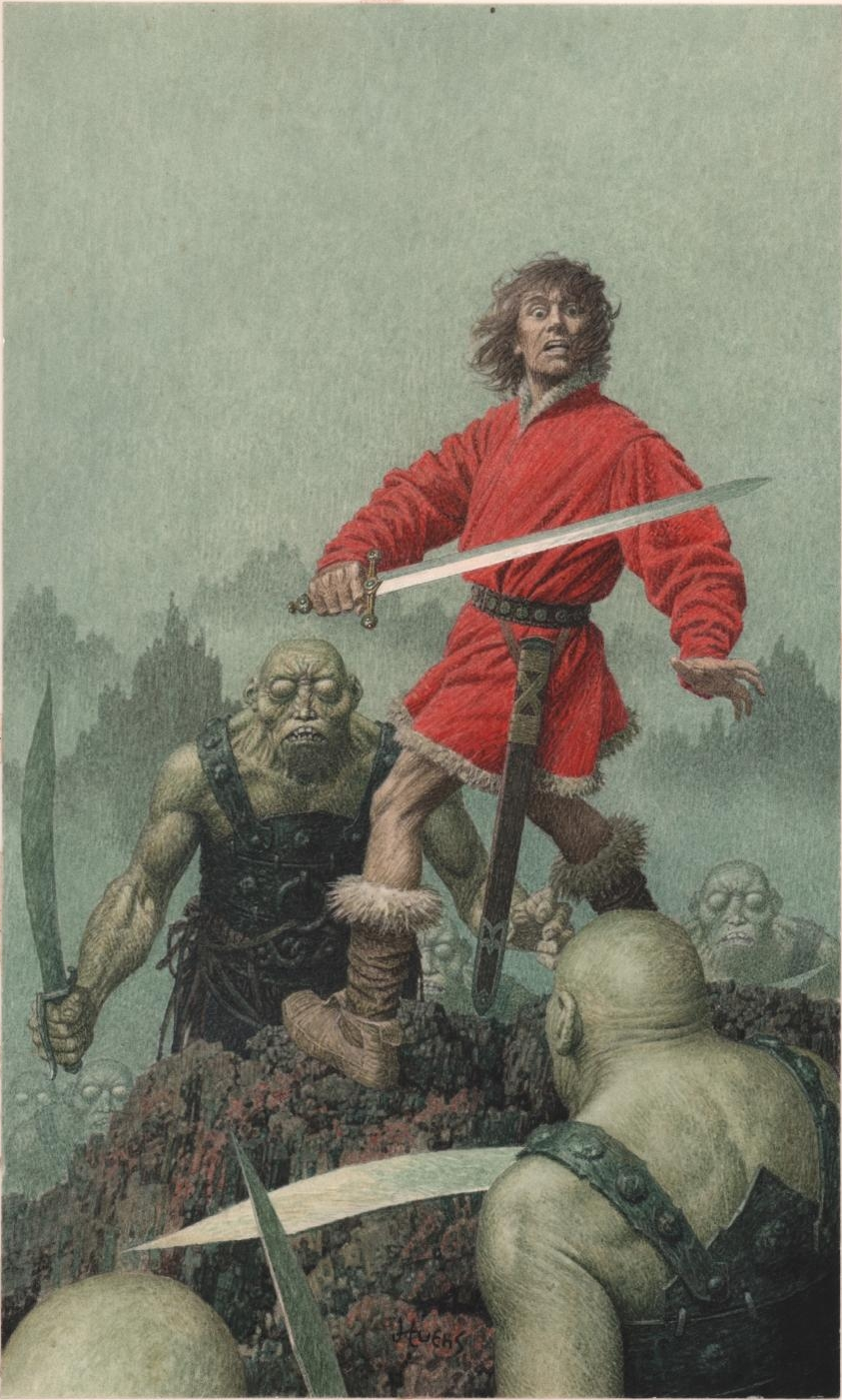
It's a visceral scene that pulls the viewer in like any cover should. Check out the fear in those bugging eyes. The ligaments of the knee. The ligaments on that Couldron-born zombie's neck. A lot of ligaments in this one! This image may have been my childhood introduction to the concept of ligaments.
The artist is the Belgian illustrator Jean-Léon Huens (1921-1984). There isn't a ton of information about him available, and easily the best source is this introduction by Howard E. Paine, former Art Director at the National Geographic.
The whole thing is worth checking out, but here's how Paine describes Huens' approach to painting:
Generous in many ways, Jean-Leon Huens was most generous in the rich detail that he gave to every painting. Instead of using shortcuts and simplifications, he took great delight in recreating the wood grain in furniture, the texture of clothing, the brickwork of old buildings, the wrinkles of old age. And over all a gentle Flemish light that unified all the elements of these miniature masterpieces.
Huens was a master not only of detail and of lighting, but also of perspective and composition. [...]
Huens painted with what he called “water color pencils,” which enabled him to render detail with great precision, later brushing a slight wash of clear water over the areas to blend the colors. He worked from photographs of models in various poses and costumes, often posing himself. His wife Monique—researcher; correspondent, translator, critic and photographer—assisted him throughout his career.
While the High King cover is always going to be cemented in my formative memories, Huens might be best known to modern readers for his cover to The Book of Three, the first Prydain book.
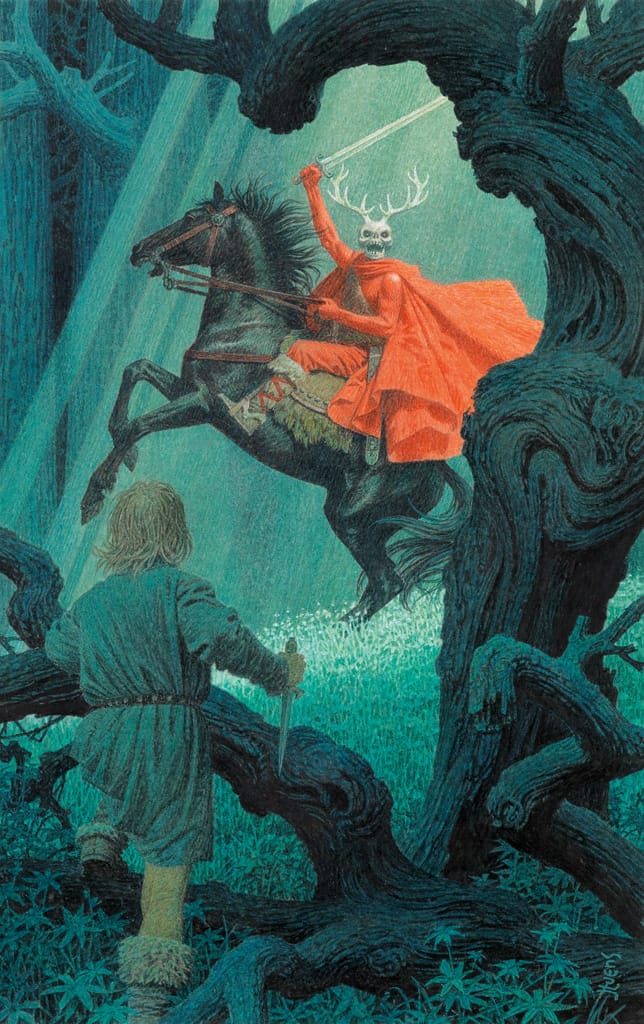
Huens crafted the covers to all five Prydain titles (and a sixth short story collection in the same world) for a 1980 re-issue by Dell Laurel-Leaf.
The second book is The Black Couldron, which you might known best from the underwhelming Disney version.
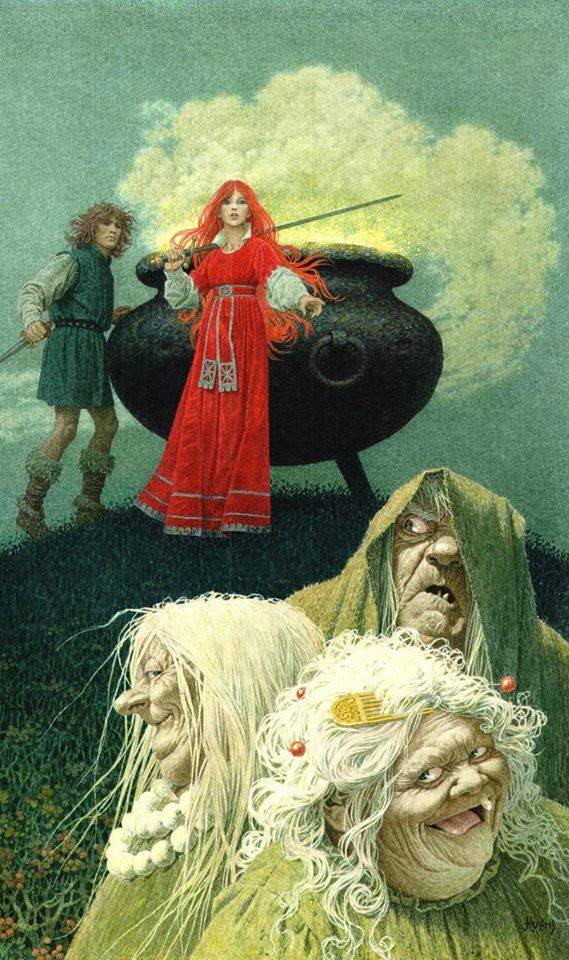
Third is The Castle of Llyr.
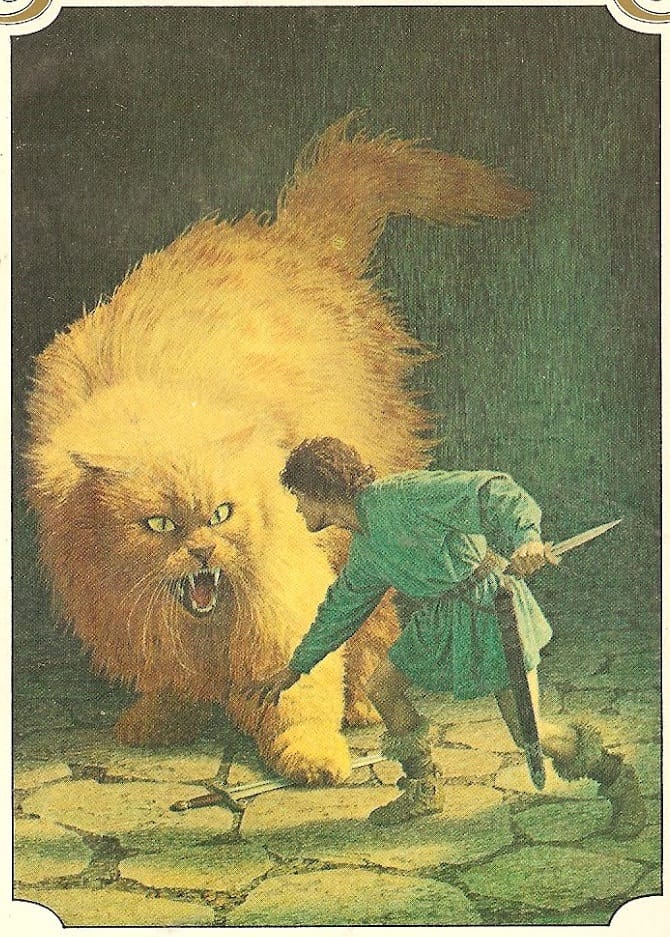
Fourth is Taran Wanderer.
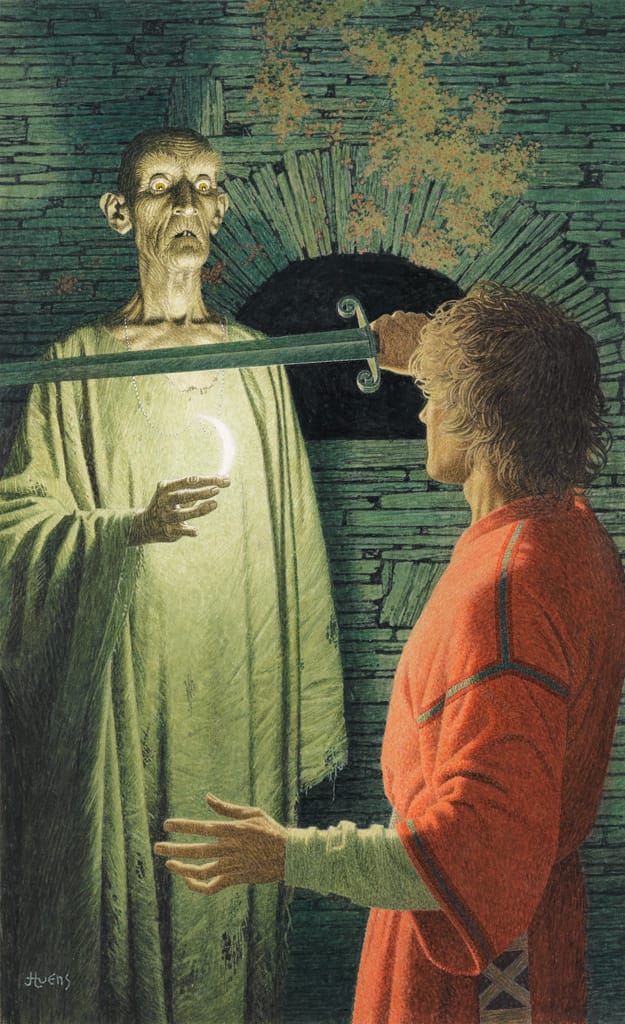
And here's The Foundling and Other Tales of Prydain, the short story collection.
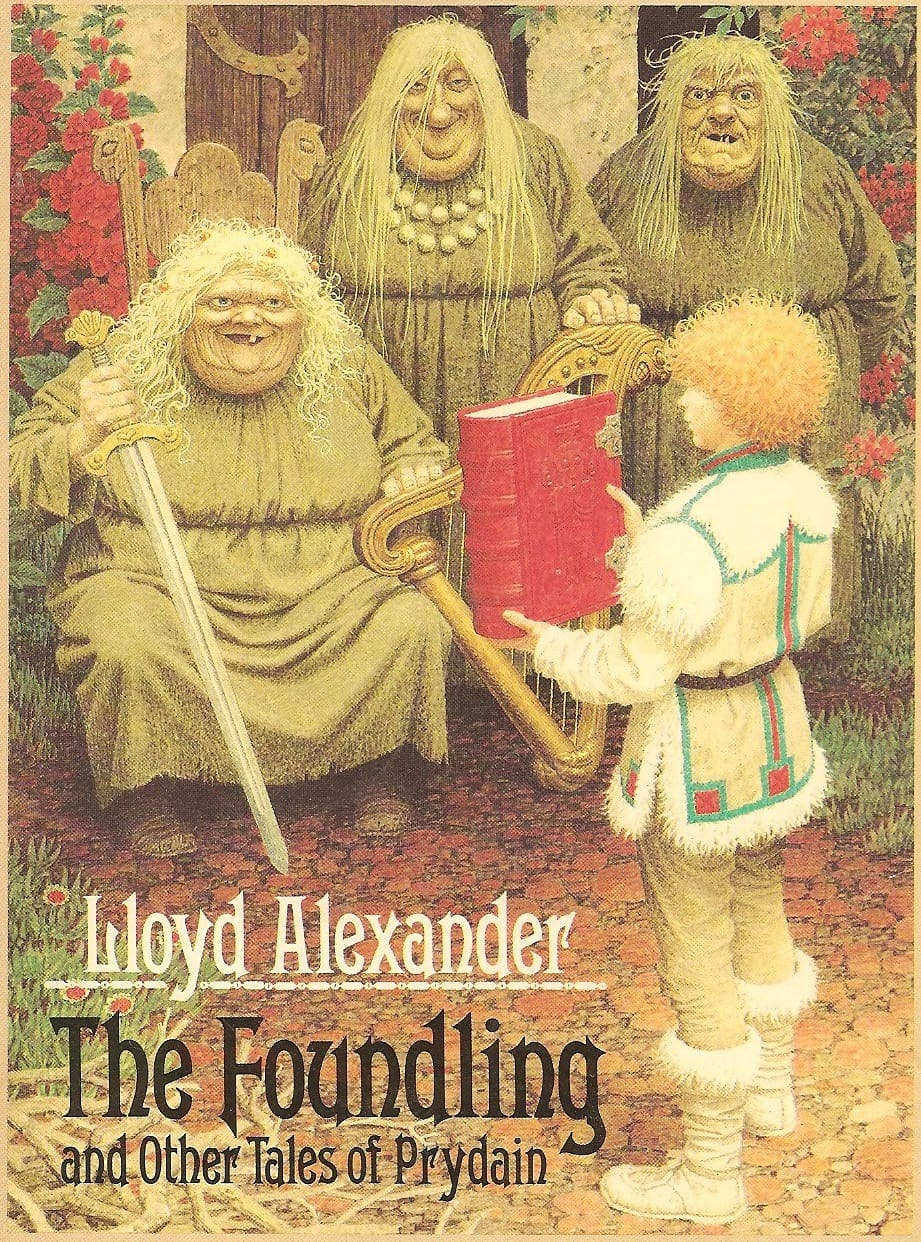
My absolute favorite non-Prydain illustration from Huens has to be “Knight Coming Upon a Sleepy Creature,” the cover to a 1982 (I think) edition of Robert Nye’s Beowulf: A New Telling.
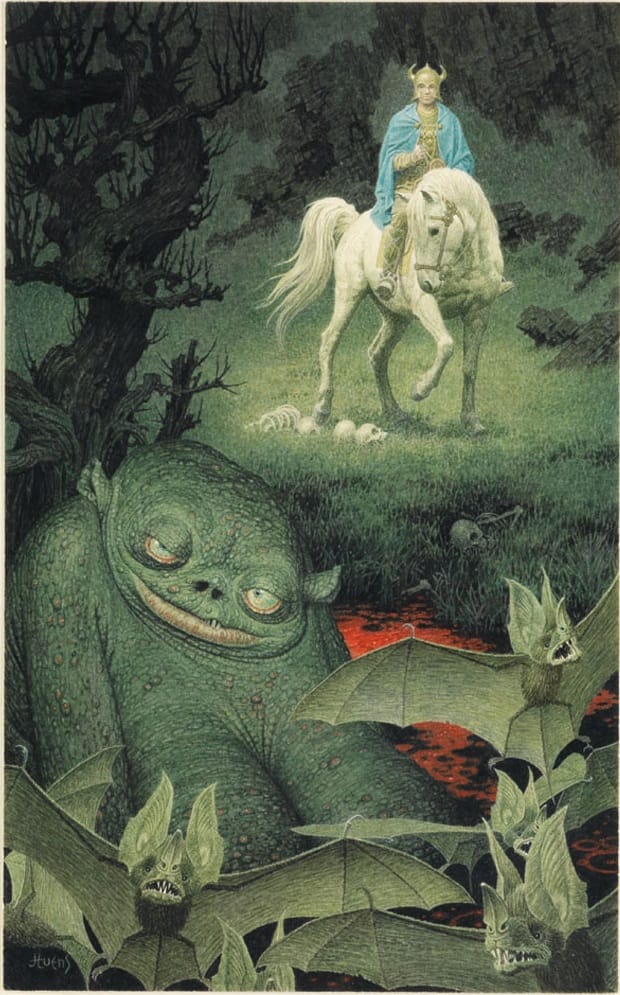
Here are a few other assorted illustrations from the guy.
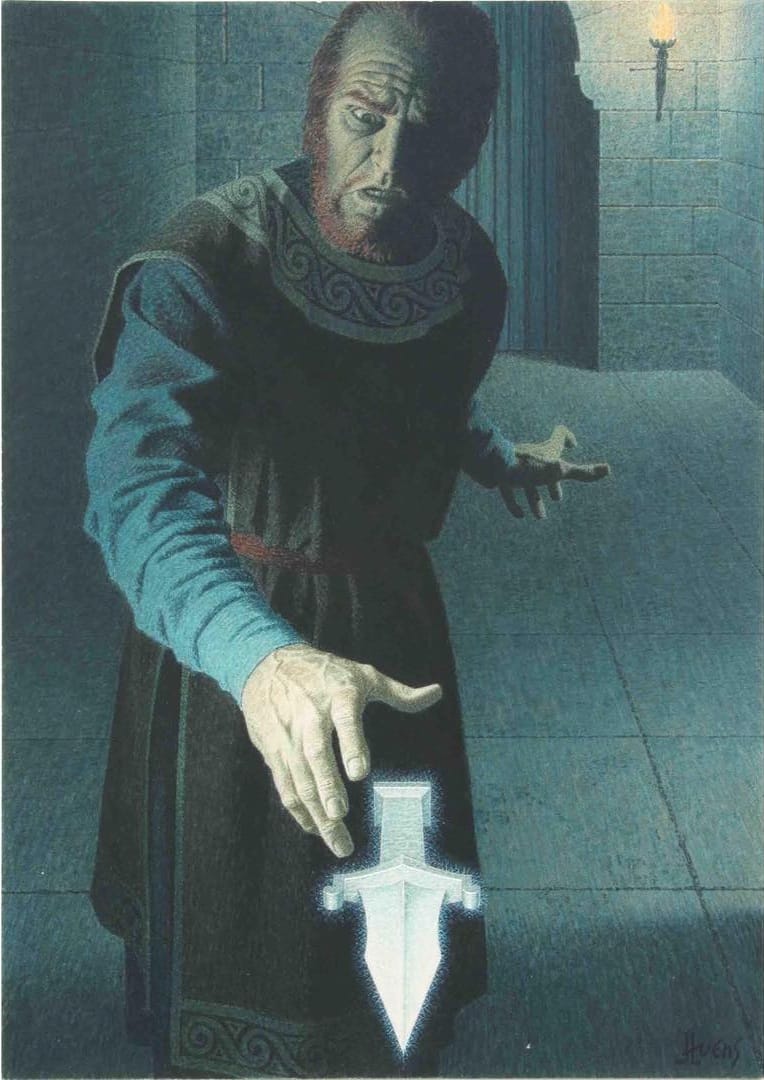
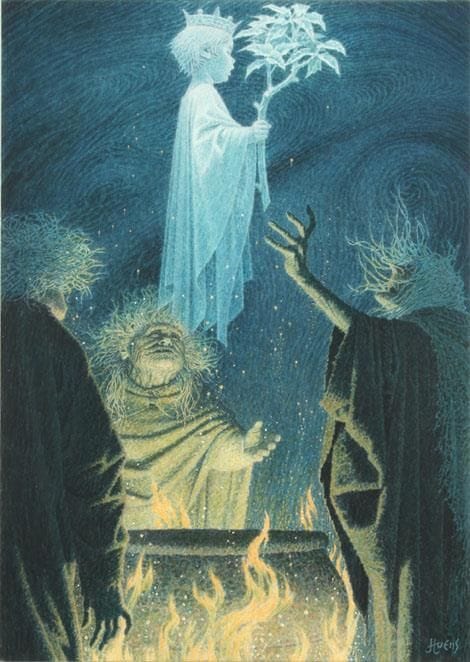
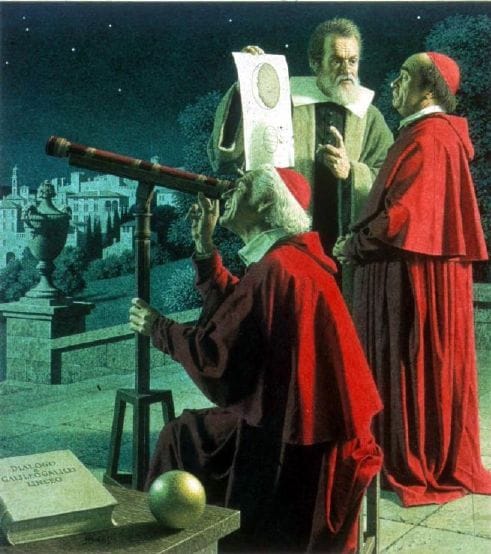
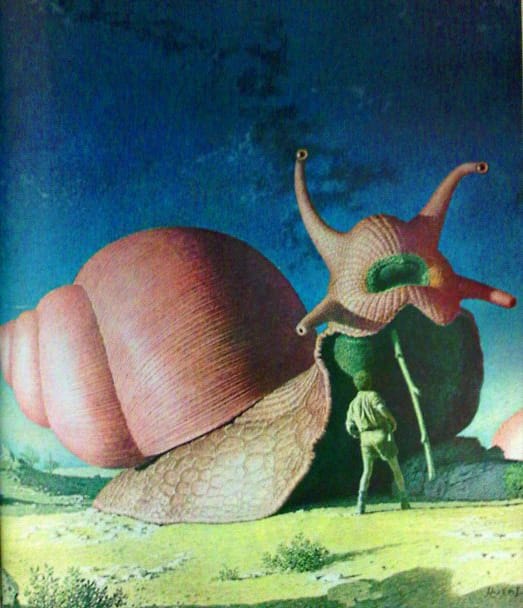
A proud Belgian, Huens founded the Historia Society in 1946 with his brother Etienne, and produced over 400 paintings of various scenes from the country's history, which were lithographed and bundled as postcards with chocolates and other treats.
They produced these cards until 1961, according to a Flickr user who has posted a big selection of the images online here, from a book collecting them. Here are a few of the most interesting ones, along with some text from the book.
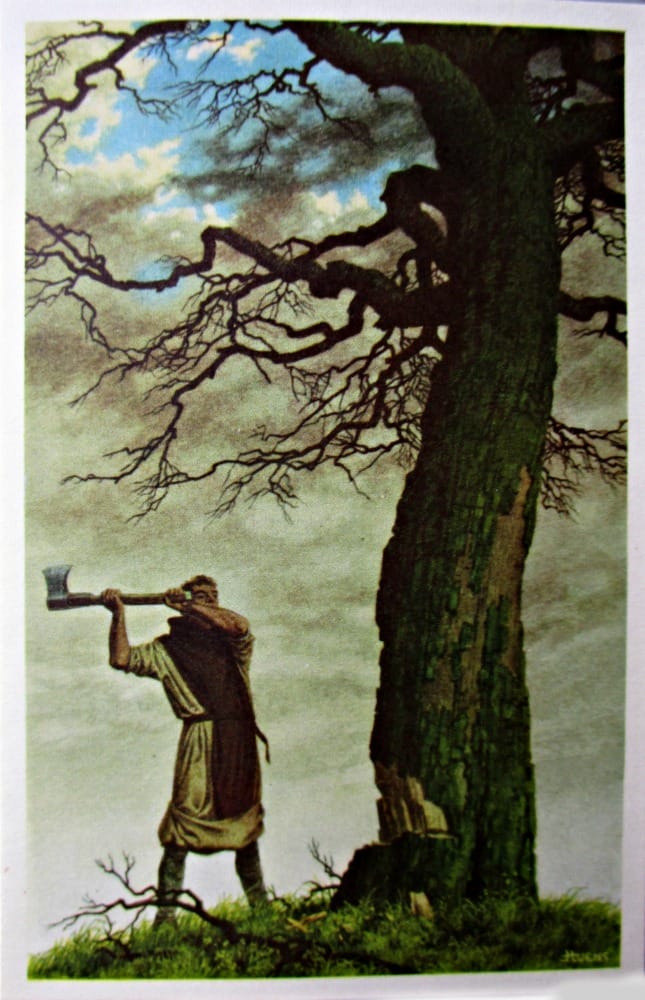
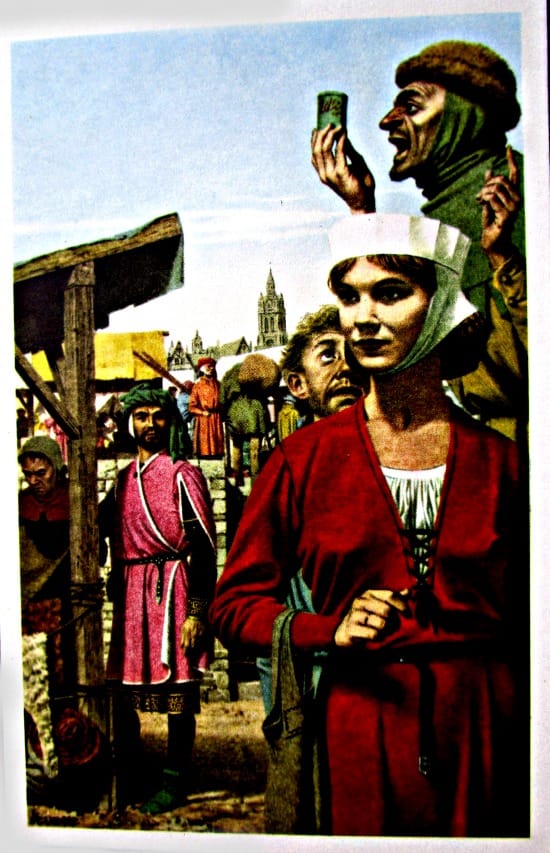
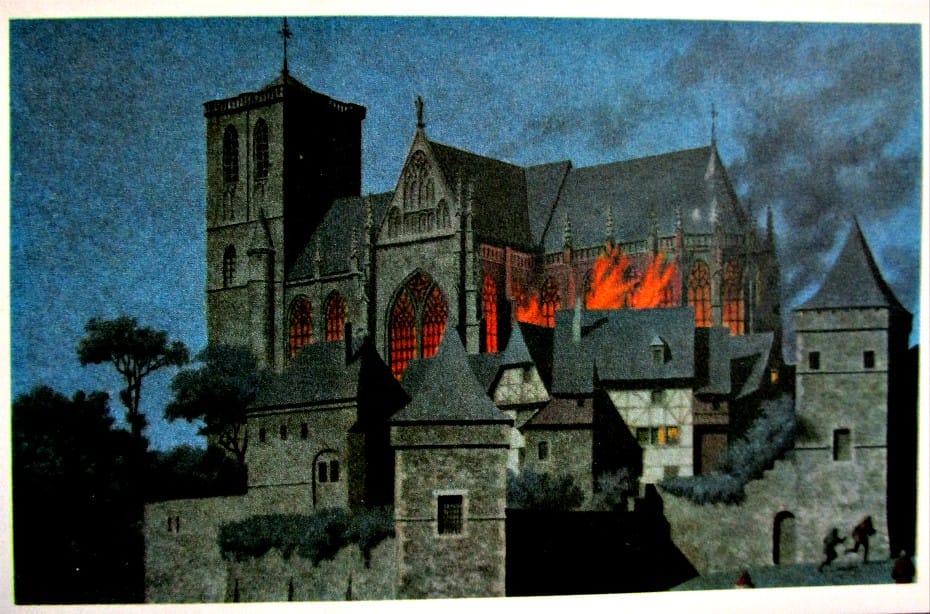
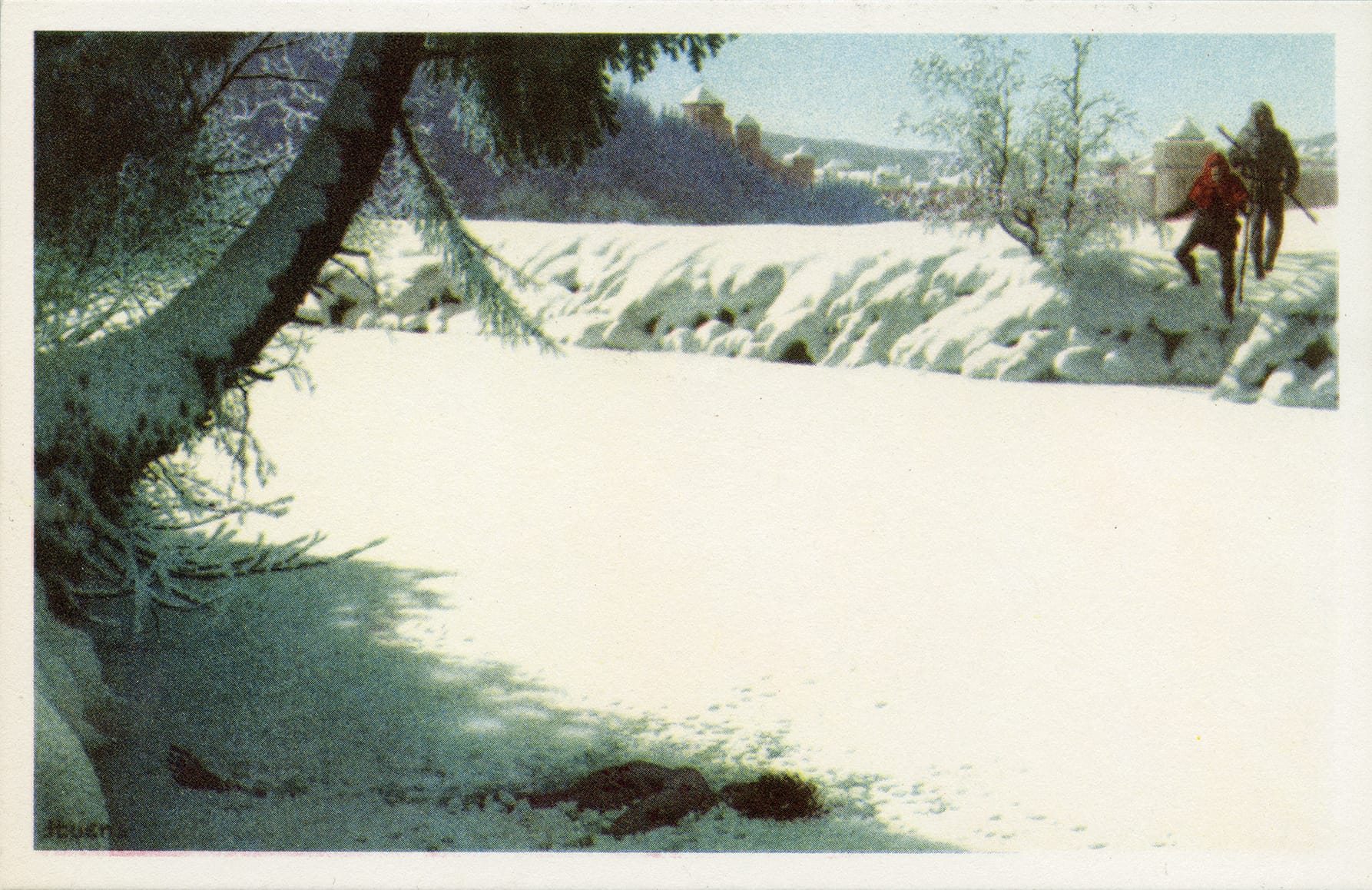
Well, I guess Huens succeeded in his goal of popularizing Belgian history - I just learned more than I ever knew just reading those captions. Now when I say "more like Charles the Cold, am I right," we can all have a good chuckle.
One last realm of Huens artwork escapes me, however. The National Geographic art director's short biography of Huens takes one sentences to tease his Christmas cards: "Huens’ Christmas cards throughout the years, painted in full color, showed Father Time in a wide variety of styles and situations, giving us a peek at Huens overflowing wit and humor."
I haven't been able to find these online anywhere, which makes sense, given the private nature of Christmas cards. That's an incredible idea for an art book that I can't imagine will ever exist: A look at famous artists' various original Christmas card art over the decades.
Speaking of kid's book cover art, here's a cool post about Rudy Nappi’s Nancy Drew cover art from friend-of-the-blog Unquiet Things.
Music recommendation: Not Donkey Kong Country • Cool & Calming Music + Rainstorm. I don't say this lightly... possibly the best video game music compilation on YouTube.
Next time: Plants and Animals of the Retrofuture